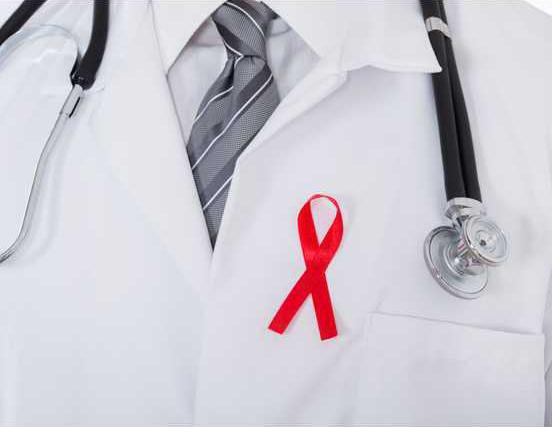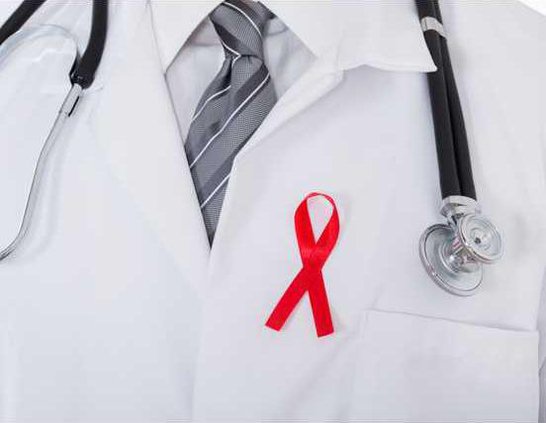About 36.7 million people worldwide are currently living with HIV, and 1.8 million of those infected are children who contracted the disease from their mothers according to AIDS.gov. A shocking one in eight people who have AIDS do not even know they have it yet - are you one of them?
While there is no cure for HIV AIDS, if detected early on, antiretroviral treatments, or ART, can keep the disease at bay and allow carriers to lead a fairly normal life. The only way to know for sure whether you have contracted HIV is to be tested for it.
December 1 of every year since 1988 is World AIDS Day. It is a day to raise awareness about HIV AIDS, show support for those living with this disease and unite in the fight against the spread of AIDS. It was the worlds first global health day according the the World AIDS Day website.
So in order to raise awareness and help you catch the disease early on, here are some symptoms in each stage of the diesease to watch for, according to the Aids Foundation of Chicago.
Stage one
The signs of HIV infection may not present themselves for years and possibly decades in some, but most people will experience flu-like symptoms 2-4 weeks after infection.
Headaches, fever, tiredness, swollen lymph nodes, joint pain and a possible rash are all signs of the HIV virus. These are also common symptoms for the normal flu, so if there is any possibility you've been infected and these symptoms show up, it's best to be tested for HIV AIDS and start treatment as soon as possible.
Stage two
After the initial flu-like symptoms, which may last for weeks, the virus enters a latent period where no symptoms are detectable. The latent period may last up to a decade if it's not treated with ART, but with the help of the Antiretrovirals, the latent period can last for three or more decades.
Stage three
By stage three the HIV virus has advanced to full blown AIDS, and not much can be done. Once AIDS symptoms settle in, it is usually fatal within 2-3 years. Advanced AIDS is most often identified by extreme and rapid weight loss. AIDS sufferers may also have prolonged diarrhea (lasting more than a couple weeks), pneumonia, extreme fatigue, herpes (mouth and genital sores), a persistent dry cough, severe night sweats, dementia and red, brown, pink or purple blotches on the skin. Not all AIDS patients have every one of these symptoms, but many will.
If detected early on, HIV does not have to progress quickly to AIDS. Those with HIV who are treated early with antiretrovirals can live almost as long as someone without AIDS. They must diligently take a daily treatment for the rest of their lives, but they can still live a full life. The important thing to remember everyday, but especially on World AIDS Day is the AIDS pandemic has not gone away. Make sure you protect yourself from it.
While there is no cure for HIV AIDS, if detected early on, antiretroviral treatments, or ART, can keep the disease at bay and allow carriers to lead a fairly normal life. The only way to know for sure whether you have contracted HIV is to be tested for it.
December 1 of every year since 1988 is World AIDS Day. It is a day to raise awareness about HIV AIDS, show support for those living with this disease and unite in the fight against the spread of AIDS. It was the worlds first global health day according the the World AIDS Day website.
So in order to raise awareness and help you catch the disease early on, here are some symptoms in each stage of the diesease to watch for, according to the Aids Foundation of Chicago.
Stage one
The signs of HIV infection may not present themselves for years and possibly decades in some, but most people will experience flu-like symptoms 2-4 weeks after infection.
Headaches, fever, tiredness, swollen lymph nodes, joint pain and a possible rash are all signs of the HIV virus. These are also common symptoms for the normal flu, so if there is any possibility you've been infected and these symptoms show up, it's best to be tested for HIV AIDS and start treatment as soon as possible.
Stage two
After the initial flu-like symptoms, which may last for weeks, the virus enters a latent period where no symptoms are detectable. The latent period may last up to a decade if it's not treated with ART, but with the help of the Antiretrovirals, the latent period can last for three or more decades.
Stage three
By stage three the HIV virus has advanced to full blown AIDS, and not much can be done. Once AIDS symptoms settle in, it is usually fatal within 2-3 years. Advanced AIDS is most often identified by extreme and rapid weight loss. AIDS sufferers may also have prolonged diarrhea (lasting more than a couple weeks), pneumonia, extreme fatigue, herpes (mouth and genital sores), a persistent dry cough, severe night sweats, dementia and red, brown, pink or purple blotches on the skin. Not all AIDS patients have every one of these symptoms, but many will.
If detected early on, HIV does not have to progress quickly to AIDS. Those with HIV who are treated early with antiretrovirals can live almost as long as someone without AIDS. They must diligently take a daily treatment for the rest of their lives, but they can still live a full life. The important thing to remember everyday, but especially on World AIDS Day is the AIDS pandemic has not gone away. Make sure you protect yourself from it.








